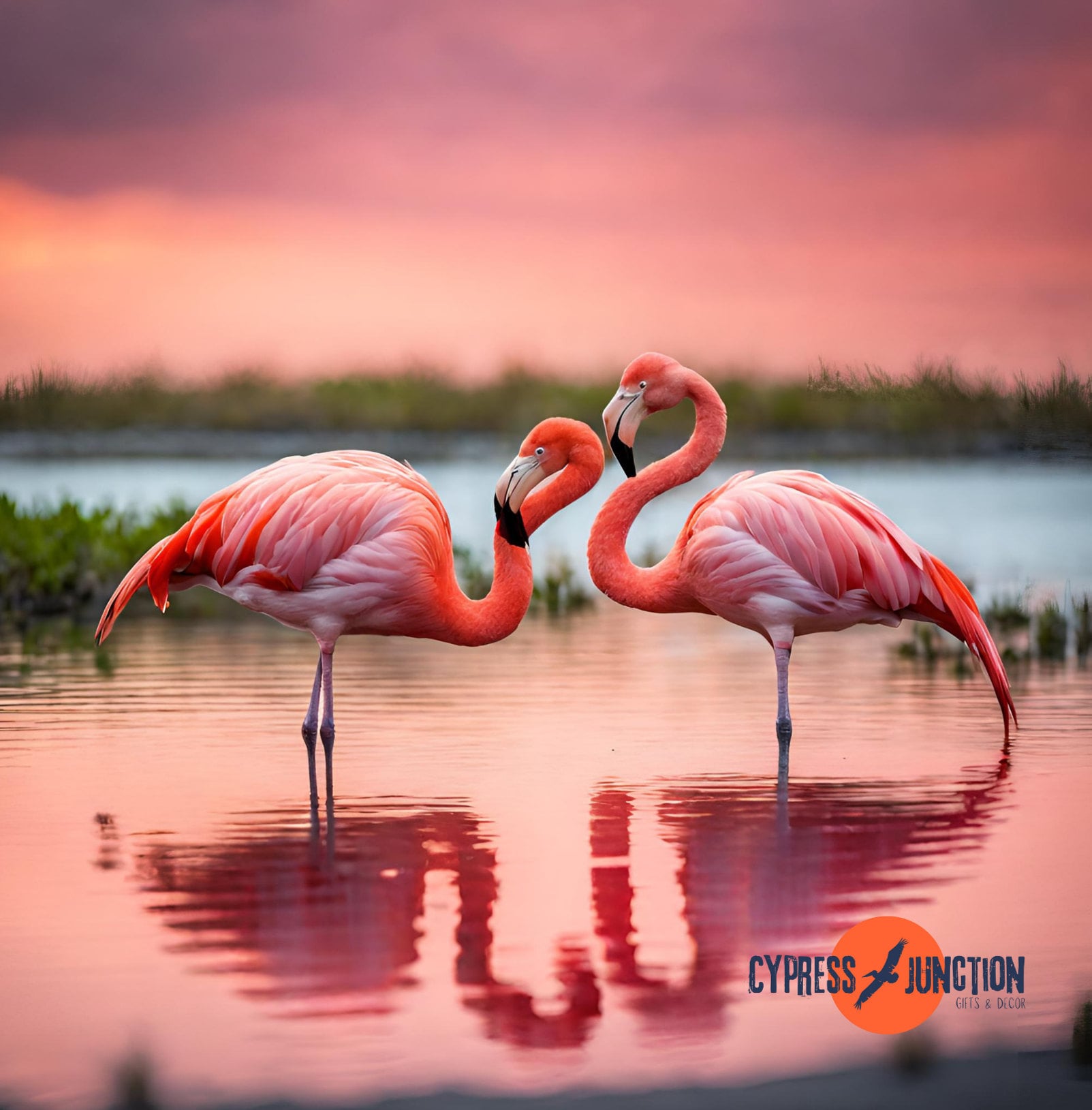Flamingos, with their striking pink plumage, have long fascinated observers and are a symbol of the tropics. These birds are notable for their vibrant coloration, which they acquire from their diet of algae and crustaceans rich in carotenoids.
Habitat
Flamingos inhabit a variety of environments, including lagoons, lakes, and swamps, predominantly in warm regions. They prefer shallow, saline waters where they can easily forage for food. These birds are highly adaptable, which allows them to thrive in both wild and captive settings.
Food Sources
Their diet mainly consists of algae, small crustaceans, and aquatic insects. Their uniquely shaped beak and specialized feeding technique enable them to sift through mud and water to extract food. The pigments in their diet are directly responsible for their pink and red feathers.
Migration Patterns
Flamingos are known to migrate in response to environmental changes, such as water levels and food availability. Their migration is not as predictable or extensive as some other bird species, often moving between feeding grounds as needed.
Social Order
These birds are highly social and live in large colonies, which can consist of thousands of individuals. This social structure is crucial for their survival, providing protection from predators and helping them locate food.
Recent Sightings in Florida
Since Hurricane Idalia in August 2023, flamingos have been spotted throughout Florida, including in areas like Pensacola. The Florida Fish and Wildlife Conservation Commission (FWC) suggests that these birds may have hitched a ride on the storm, leading to their unusual presence in these areas. This occurrence highlights the resilience and adaptability of flamingos, as they navigate new environments.
Conservation and Protection
To protect these remarkable birds, it is crucial to preserve their natural habitats and ensure clean, unpolluted water sources. Public awareness and education about the importance of flamingos in the ecosystem can also play a vital role in their conservation. Avoiding disturbance of their colonies, especially during breeding seasons, and supporting wildlife conservation initiatives are other effective ways to ensure the flamingos continue to thrive.
In Summary
Flamingos are fascinating creatures with unique characteristics and behaviors. Their recent appearances in Florida post-Hurricane Idalia have provided a unique opportunity to observe these birds in new environments. By taking active steps to protect their habitats and understanding their needs, we can ensure that flamingos continue to grace our world with their beauty and elegance.
About the Author: James Robbins, a Florida Panhandle native, owns Cypress Junction Gifts & Decor. Visit his site at www.CypressJunction.com for a taste of Florida's unique charm.
